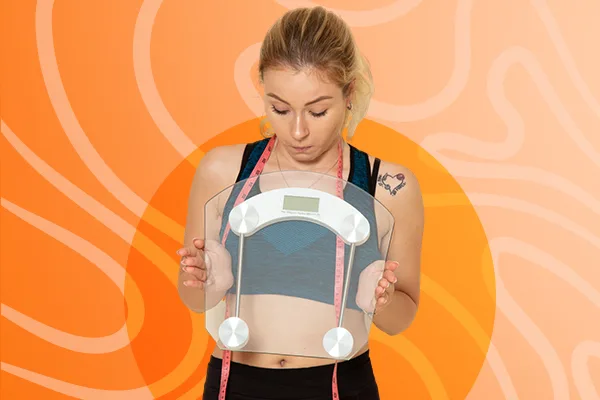What Can You Expect from Zepbound Weight Loss Treatment?
Zepbound weight loss treatment uses tirzepatide, a once-weekly injection that helps suppress appetite, regulate blood sugar, and promote fat loss. It’s FDA-approved for adults with obesity or weight-related conditions. Key takeaways include:
- Average weight loss of 35–52 lbs over 72 weeks
- Improved sleep apnea symptoms in obese patients
- Works by mimicking GIP and GLP-1 hormones to reduce hunger and improve digestion
- Doses range from 2.5 mg to 15 mg weekly, gradually increased
- Common side effects: nausea, fatigue, digestive issues
Zepbound offers a powerful option for long-term weight management when paired with healthy lifestyle changes.
In recent years, the fight against obesity and its related health complications has seen significant advancements, as new treatments have continued to emerge to help individuals manage their weight effectively. Notably, one such breakthrough is Zepbound (tirzepatide), an FDA-approved medication designed for weight loss, weight management, and obstructive sleep apnea (OSA) in patients with obesity. This article takes a comprehensive look at Zepbound—how it works, its benefits, potential side effects, and everything you need to know about using it for weight management.
What is Zepbound?
Zepbound is a prescription medication that the FDA approves for chronic weight management and the treatment of moderate to severe obstructive sleep apnea in adults with obesity. Doctors administer it as a once-weekly injection under the skin (subcutaneously), and it is meant to be used alongside a healthy lifestyle that includes a balanced diet and regular exercise.
To understand its impact, Zepbound works by suppressing appetite and increasing the feeling of fullness after eating. Consequently, this helps individuals consume fewer calories, leading to weight loss and improved overall health. For instance, clinical trials have shown that Zepbound can result in significant weight loss and improvements in sleep apnea symptoms, thus making it an innovative tool for managing obesity-related conditions.
Who is Zepbound For?
Zepbound specifically targets adults who meet one of the following criteria:
1. Obesity (BMI ≥ 30 kg/m²)
Adults with a body mass index (BMI) of 30 or higher are eligible to use Zepbound for weight management.
2. Overweight (BMI ≥ 27 kg/m²) with Weight-Related Conditions
Adults with a BMI of 27 or higher who also have weight-related medical problems such as:
- Type 2 diabetes
- High blood pressure (hypertension)
- High cholesterol (dyslipidemia)
- Obstructive sleep apnea
- Cardiovascular disease
3. Obstructive Sleep Apnea (OSA)
Additionally, Zepbound helps treat moderate to severe OSA in adults with obesity, thereby providing a dual benefit of improving sleep apnea symptoms while promoting weight loss.
How Does Zepbound Work?
Zepbound is a GIP and GLP-1 receptor agonist, meaning it mimics the action of two natural hormones in the body: glucose-dependent insulinotropic polypeptide (GIP) and glucagon-like peptide-1 (GLP-1). These hormones play key roles in regulating appetite, digestion, and blood sugar levels.
When Zepbound activates these receptors, it leads to the following effects:
1. Appetite Suppression
Zepbound slows the rate of food movement through the digestive system, making individuals feel full faster and for longer periods after eating.
2. Blood Sugar Regulation
By stimulating insulin production and reducing the amount of sugar released by the liver, Zepbound helps regulate blood sugar levels. This feature is particularly beneficial for individuals with type 2 diabetes or prediabetes.
3. Weight Loss with Zepbound
The combination of appetite control and improved digestion leads to reduced calorie intake and, ultimately, weight loss.

Clinical Trials and Effectiveness of Zepbound
Weight Loss Results of Zepbound
In clinical trials, Zepbound has demonstrated remarkable effectiveness for weight loss:
- Patients taking 5 mg of Zepbound weekly lost an average of 16.1 kg (35.5 lbs) over a period of 72 weeks.
- Those on the 10 mg dose lost an average of 22.2 kg (48.9 lbs).
- Participants receiving the 15 mg dose experienced the highest weight loss, averaging 23.6 kg (52 lbs).
- By comparison, patients on a placebo lost only 2.4 kg (5.3 lbs) over the same period.
Clearly, these findings highlight Zepbound’s potential to significantly reduce body weight and improve overall health when combined with lifestyle changes.
Obstructive Sleep Apnea (OSA) Results
Moreover, Zepbound proves beneficial for patients with OSA. For example, in the SURMOUNT-OSA phase 3 trial, 42% of adults using Zepbound had no or mild, non-symptomatic OSA after one year of treatment, compared to only 16% of those on a placebo. Moreover, OSA patients on Zepbound experienced an average weight loss of 45 lbs (18% of their body weight).
Zepbound vs. Mounjaro: What’s the Difference?
Although Zepbound and Mounjaro both contain the same active ingredient—tirzepatide—they are approved for different purposes:
- Mounjaro is approved for the treatment of type 2 diabetes, helping to lower blood sugar levels.
- Zepbound, on the other hand, is approved for chronic weight management and the treatment of OSA in obese patients.
Both weight loss medications require weekly injections and are available in the same dosage strengths (2.5 mg to 15 mg per dose). However, Zepbound also offers single-dose vials, thus making it more accessible for certain patients.
How to Use Zepbound
Zepbound is injected subcutaneously once a week. It can be administered at any time of the day, with or without food. To ensure effective use, here’s a step-by-step guide to using Zepbound effectively:
- Initial Dose: Start with 2.5 mg once a week for the first four weeks.
- Gradual Dose Increase: After four weeks, increase the dosage to 5 mg weekly. If needed, the dose can be further increased in 2.5 mg increments, but only after staying on the current dose for at least four weeks.
- Maintenance Dose: The recommended maintenance dose is 5 mg, 10 mg, or 15 mg weekly, depending on individual goals and tolerance.
- Maximum Dose: Do not exceed 15 mg per week.
For proper administration, Zepbound can be injected into the abdomen, thigh, or upper arm. For best results, rotate injection sites to avoid irritation.

What to Do If You Miss a Dose
If you miss a dose, take it as soon as you remember, within 4 days of the missed dose. Howver, if more than 4 days have passed, skip the missed dose and continue with your regular schedule. Importantly, never inject two doses within three days of each other.
Common Side Effects of Zepbound
In general, most patients tolerate Zepbound well, but like all medications, it may cause side effects. The most common ones include:
- Nausea
- Diarrhea
- Constipation
- Indigestion
- Abdominal pain
- Vomiting
- Fatigue
- Injection site reactions
- Hair loss
Serious Side Effects to Watch For
In rare cases, Zepbound may cause serious side effects, including:
- Pancreatitis: Severe abdominal pain that may radiate to the back.
- Thyroid Tumors: Swelling or a lump in the neck, difficulty swallowing, or a hoarse voice.
- Gallbladder Disease: Symptoms include abdominal pain, nausea, and chalky stools.
- Kidney Problems: Reduced urination, swelling in the feet or ankles, and shortness of breath.
- Hypoglycemia: Symptoms include dizziness, sweating, confusion, and a fast heart rate.
Therefore, if you experience any of these, seek immediate medical attention—especially if symptoms such as difficulty breathing, allergic reactions, or vision changes occur.
Warnings and Precautions
Do Not Use Zepbound If:
- You or a family member has a history of medullary thyroid carcinoma (MTC).
- You have Multiple Endocrine Neoplasia syndrome type 2 (MEN 2).
- You are allergic to tirzepatide or any of the inactive ingredients.
Pregnancy and Breastfeeding
It is unclear if Zepbound poses risks to unborn babies or passes into breast milk. Therefore, pregnant and breastfeeding women should consult their healthcare provider before using Zepbound. Also, note that Zepbound may reduce the effectiveness of birth control pills; thus, alternative contraceptive methods are advised during treatment.
Cost and Savings for Zepbound
The cost of Zepbound depends on factors like insurance coverage and pharmacy selection. However, many patients may qualify for savings programs:
- With Insurance: Some patients pay as little as $25 per month using a Zepbound savings card.
- Without Insurance: Zepbound vials are available at a reduced cost through programs like LillyDirect.
Final Thoughts: Zepbound for Weight Loss
Zepbound represents an exciting option for individuals struggling with obesity and its associated health conditions. With its dual action as a GIP and GLP-1 receptor agonist, it effectively promotes weight loss, improves appetite control, and addresses sleep apnea. Still, while it is generally well-tolerated, potential side effects and specific health risks should be discussed with a healthcare provider before starting treatment.
Ultimately, by combining Zepbound with a healthy diet, regular exercise, and ongoing medical supervision, patients can achieve significant weight loss and improve their overall quality of life.





